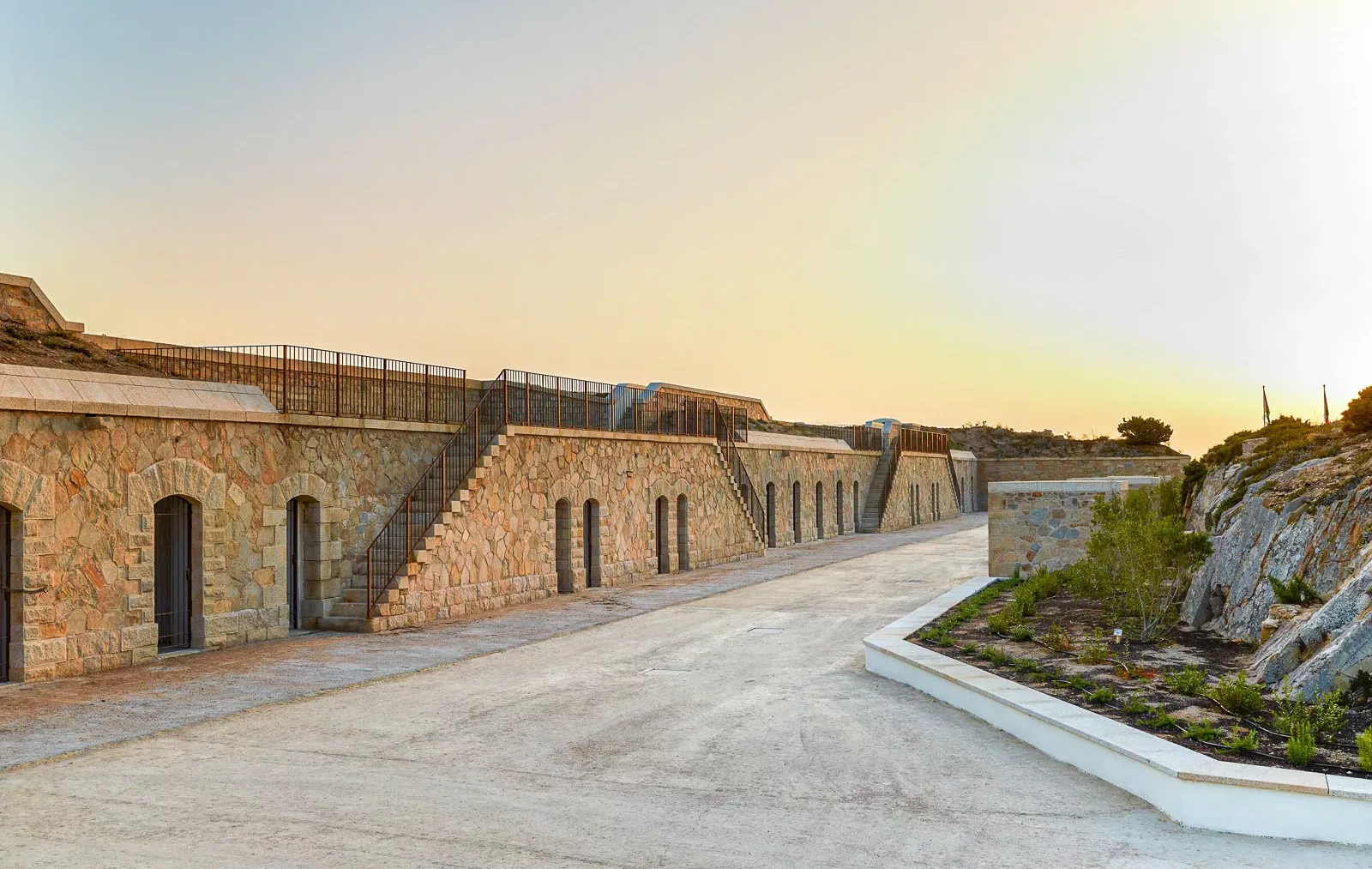Giuseppe Garibaldi Memorial at Caprera
Building restoration and rehabilitation of the Fort Arbuticci complex for the Giuseppe Garibaldi Museum in Caprera.
2011 – 2012
OVERVIEW
Building restoration related to the cultural events of the celebrations of the 150th Anniversary of National Unity
CLIENT
Presidency of the Council of Ministers – Technical Mission Unit.
COST
€ 5.336.884,55
LOCATION
Caprera Island in La Maddalena, Sardinia, Italy
RUP
Eng. Luigivalerio Sant’Andrea
DIRECTOR OF WORK
Eng. Sergio Caporossi
DESIGNER
Architect Pietro Carlo Pellegrini
PROJECT DESCRIPTION
Edilerica’s work as general contractor on the Fort Arbuticci complex involved the building restoration of the 19th-century-era military barracks in its entirety.
Designed by architect Pietro Carlo Pellegrini, the transformation of the structure into a museum dedicated to Giuseppe Garibaldi was distinguished by its sobriety and elegance and full respect for the uniqueness of the site.
The special naturalistic setting in which the Fort Arbuticci complex is set guided the choice of materials and colors used for the new flooring and masonry work. A particularly striking white was chosen for the hues of the walls and new plaster, while a clever mix of local stone and concrete revitalized the outdoor spaces.
Respect for the original structure soon had to come to terms with theinclusion of more innovative and contemporary elements, such as the extraordinary Venetian floors laid in the outdoor area and the corten steel gate.
The four barracks converted into exhibition spaces are now flanked by buildings designed to house services for the public.
for the completion of the project
workers involved
consecutive site activities divided over several shifts 7/7 days

The construction site
The building restoration work carried out by the Edilerica team proved particularly challenging, especially from a logistical point of view.
First, thegeographical isolation of the place where Fort Arbuticci stands influenced the process of procurement of materials, which had to arrive first from the peninsula to Sardinia and then to Caprera.
Second, bringing electricity to the construction site also proved complex. Since the nearest electrical substation was located one kilometer from the fort, strenuous excavation into the live rock was required to build a direct line that could accommodate a kilometer-long conduit.
The project was completed in only 7 months.
Such an achievement was possible thanks to a complex organizational machine involving 80 people including technicians and workers whose work was divided into double shifts from morning at 7 a.m. until evening at 9 p.m., 7 days a week.
Fort Arbuticci in the 1800s
Fort Arbuticci on the island of Caprera was built in the late 1800s. Originally intended to control the Moneta Canal, the fort was to crossfire with the Punta Villa battery, serving six direct-fire howitzers and four cannons. Indeed, the cannons, although placed in an elevated position, could have provided an effective remedy against both threats from the sea and unlikely attacks from land. The original buildings were partly carved out of live rock and were immediately dedicated to the internal needs of the barracks. They included a tinderbox in a slightly isolated location, ammunition rooms, warehouses, housing for officers, non-commissioned officers and other offices.
The main barracks could house up to 120 men, while a smaller one could accommodate up to 60. There were also stables, a guardhouse, kitchens, canteens and latrines-all distinguished by military rank.
Italy Square
In front of the four exhibition bodies, Italy Square was created. This is a publicly accessible sculptural space where the stylized shape of the peninsula is made of red stone mosaic, which transforms into floor and seating. Within the mosaic, the sea is composed of shattered pieces of glass embedded in stone. Caprera is marked by a red Murano glass tile. Italy Square is a tribute to commemorate Italy, Garibaldi and the 150th anniversary of the Unification of Italy.
Photo reportage

